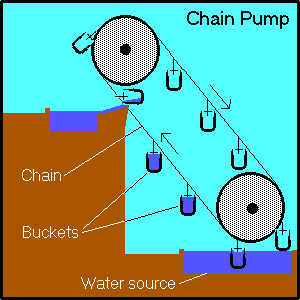The Hanging Gardens of Babylon
Part 2: Other Mysteries One of the more common mysteries has been how the plants were given water. Babylon, after all, is in the middle of a desert. Excavations in recent years have shed light on this question. Archaeologists now think that a sort of pump system was designed, utilizing buckets of water on a sort of pulley (like our modern conveyor belt). No such object has been found, of course, but the evidence that has been found fits in with this theory.
The other big mystery is who had the gardens built. Babylon wasn't exactly a democracy, so we can probably surmise that slaves or laborers built the gardens. But who had them built? The story traditionally has been that King Nebuchadrezzar II had them built for his Median wife, Amytis, because she missed the gardens of her home. No firsthand accounts of motives for building the Gardens exist, of course, so we are left to assume. We can probably conclude that the Hanging Gardens existed, based on the theory that enough people saw them and described them. We can probably conclude that the system of providing water to all those plants was remarkable and ingenius, especially given the desert climate and the mechanical capabilities of the ancient Babylonians. We can definitely say that the Hanging Gardens continue to inspire the imagination. First page > Did They Exist? > Page 1, 2 |
|
Social Studies for Kids
copyright 2002–2025
David White



 Another
question in relation to the one above is how the foundation
of the Gardens was kept intact. The building was made of
brick, and the water needed to keep the plants alive must
have had to have flown down a sort of drain in order not to
soften the brick and make the whole roof collapse. Further,
the Gardens were said to have been on several levels of
terraces. Surely a drain would have had to have been in
place for each terrace level. Archaeologists are still
working on this one.
Another
question in relation to the one above is how the foundation
of the Gardens was kept intact. The building was made of
brick, and the water needed to keep the plants alive must
have had to have flown down a sort of drain in order not to
soften the brick and make the whole roof collapse. Further,
the Gardens were said to have been on several levels of
terraces. Surely a drain would have had to have been in
place for each terrace level. Archaeologists are still
working on this one.

